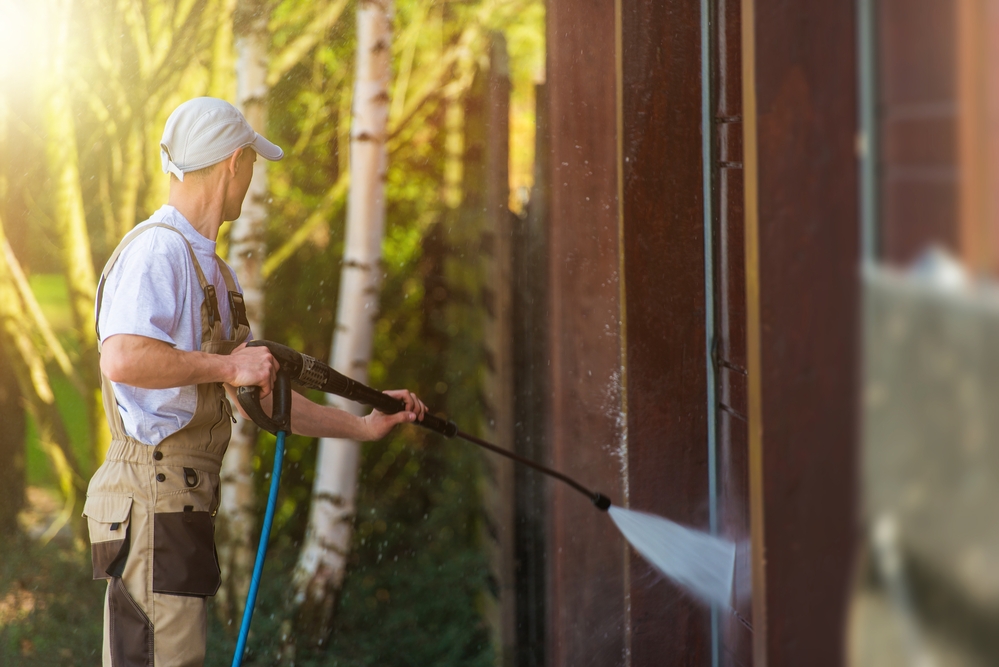Getting ready to put on that fresh coat of paint on your house means you have to do one thing first: clean it! Cleaning the surface before applying paint primarily achieves two things – it helps even out the paint, and it helps make the paint last longer.
In this day and age, there really is nothing more recommended than to just use a pressure washer because it gets the job done without the need for some hard scrubbing and wiping. In this article, we will talk about pressure washing for house painting, tips and tricks, and of course, the dos and don’ts.
Dos and Don’ts of Pressure Washing
The dos and don’ts that are specific to pressure washing revolves around the fact that pressure washers are very strong tools and should be handled with care. For example, if you’re using a pressure washer, just do so standing around two feet from the wall and never from a ladder. The pressure from the washer might be enough to push you off the ladder!
Here’s another tip: are you washing a wall with lead paint? If so, don’t use a pressure washer. The strength of pressure washing will eject lead paint into the air which can be detrimental for the health of people around.
Familiarize Yourself with the Nozzles
Before you get started with pressure washing, get to know the different kinds of nozzles. Often, they’re color coded to make it easier to remember. There are five basic nozzles that you can use and they have two main differences: spray angle and purpose.
The colors arranged in order by increasing spray angles are red (0 degrees), yellow (15 degrees), green (25 degrees), white (40 degrees), black (65 degrees). The pressure is highest with the red nozzle and decreases all the way to black.
For your house, you’re probably going to need only two to three nozzles: the yellow, green, and black ones. You’re going to want to use the yellow or green nozzles (depending on the material of your house) for washing and the black nozzle for applying the soap.
Go Over Your House Three Times
When it comes to pressure washing the house, you might think that going over it once is enough. Well, if a job is worth doing, it’s worth doing right. Going over the house only once would only remove the less stubborn pieces of dust, dirt, and grime.
To do it right, go over the house three times. The first rinse gets the house wet and helps remove large pieces of dirt and debris. You can use a strong nozzle for this step but make sure it’s not strong enough to hurt you or damage the house. Also keep the spray moving so that pressure does not accumulate in one spot too long as this can also incur some damage.
Once the first rinse is done, you’re ready for the second wash: this time with soap. Some pressure washers have a specific compartment for you to add some kind of detergent. This step does not really require that much pressure so you can switch to a soaker nozzle.
Here’s a tip: start at the top and move your way down. As you’re loosening the dirt, it will fall down with the water as gravity does its job. Best to move your way down to collectively just get all the dirt in one go.
The third and last wash is for rinsing. The nozzle needed for this step does not need to be as strong as the one needed for the first wash as it only needs to be strong enough to rinse off the detergent.
During this wash, the dirt should have already been taken care of the soap and detergent and all you need to do now is to do the final rinse off. Just make sure to follow the direction as you did for the second wash: from the top to going down.
After rinsing, make sure to let everything completely dry before applying any paint. This should take about two to three days depending on the temperatures. Furthermore, always make sure to time your window for this because the last thing you want to happen is to clean the house and get it to dry just for it to rain on the day you plan to apply paint.
Conclusion
Cleaning the house before applying a coat of paint is a simple job that will really go a long way. Pressure washing makes the job even simpler but just make sure to follow these tips to help make the job easier and avoid any mistakes.

